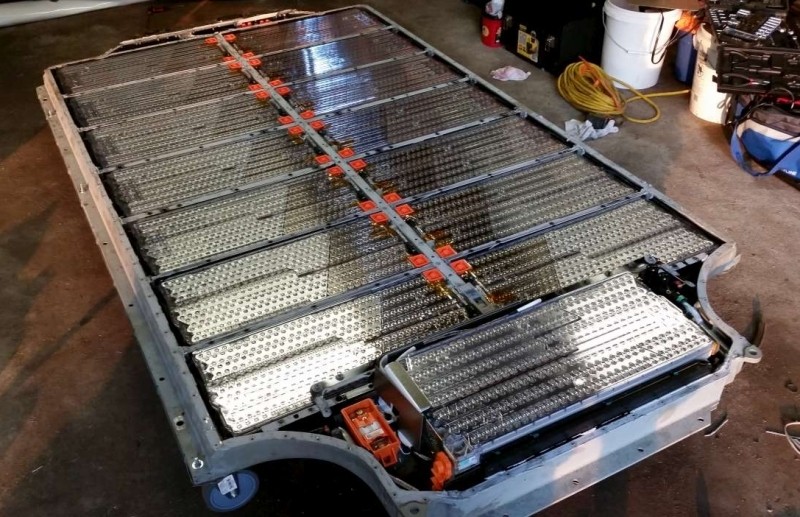Old Rocks
Diamond Member
Why Tesla Batteries Are Cheap Enough To Prevent New Power Plants
Last year, analysts hired by Oncor Electric Delivery Company were toiling away on a study of the costs and benefits of installing enormous batteries on Oncor’s grid in Texas. The benefits would surpass the costs, they calculated, if Oncor could buy batteries for $350 per kilowatt hour of capacity—or less. That was the break-even point.
At the time, the cheapest utility-scale batteries cost twice that much, the analysts noted, and some cost nearly ten times that much. But prices were falling, and the analysts predicted batteries might reach the $350 point in 2020.
They didn’t have to wait nearly so long.
Tesla’s utility-scale Powerpack battery, unveiled late Thursday night, will sell for $250/kWh.
“There’s nothing remotely at these price points,” said Tesla product architect Elon Musk.
Earlier Thursday night, I was covering a Northwestern University debate on the future of nuclear energy, in which the nuclear critic Arnie Gundersen predicted Tesla’s new utility-scale battery would render new-build nuclear plants obsolete. The battery would solve the reliability problem of intermittent solar and wind, he predicted, providing a cheaper alternative to nuclear power’s 24-hour output.
Gundersen predicted the cost of the utility-scale battery would fall to 2 cents per kWh of the electricity that passes through it, which in coming years would render renewableenergy with reliable storage cheaper than a new nuclear plant. (Nuclear plants currently under construction will deliver electricity costing an estimated ¢16-¢19 per kWh). Gundersen focused on the utility-scale battery, which we would soon learn to call the Powerpack, but most of the press attention in the wake of Musk’s announcement has focused on the home battery, the Powerwall, which is both more expensive per kWh and less poised to reap benefits.
Some observers noticed both batteries.
“The Tesla battery is better than I thought for homes,” wrote the author Ramez Naam in a review of Tesla’s new battery line. “And at utility scale, it’s deeply disruptive.”
This makes grid scale storage a reality as fast as they can manufacture the batteries.
Last year, analysts hired by Oncor Electric Delivery Company were toiling away on a study of the costs and benefits of installing enormous batteries on Oncor’s grid in Texas. The benefits would surpass the costs, they calculated, if Oncor could buy batteries for $350 per kilowatt hour of capacity—or less. That was the break-even point.
At the time, the cheapest utility-scale batteries cost twice that much, the analysts noted, and some cost nearly ten times that much. But prices were falling, and the analysts predicted batteries might reach the $350 point in 2020.
They didn’t have to wait nearly so long.
Tesla’s utility-scale Powerpack battery, unveiled late Thursday night, will sell for $250/kWh.
“There’s nothing remotely at these price points,” said Tesla product architect Elon Musk.
Earlier Thursday night, I was covering a Northwestern University debate on the future of nuclear energy, in which the nuclear critic Arnie Gundersen predicted Tesla’s new utility-scale battery would render new-build nuclear plants obsolete. The battery would solve the reliability problem of intermittent solar and wind, he predicted, providing a cheaper alternative to nuclear power’s 24-hour output.
Gundersen predicted the cost of the utility-scale battery would fall to 2 cents per kWh of the electricity that passes through it, which in coming years would render renewableenergy with reliable storage cheaper than a new nuclear plant. (Nuclear plants currently under construction will deliver electricity costing an estimated ¢16-¢19 per kWh). Gundersen focused on the utility-scale battery, which we would soon learn to call the Powerpack, but most of the press attention in the wake of Musk’s announcement has focused on the home battery, the Powerwall, which is both more expensive per kWh and less poised to reap benefits.
Some observers noticed both batteries.
“The Tesla battery is better than I thought for homes,” wrote the author Ramez Naam in a review of Tesla’s new battery line. “And at utility scale, it’s deeply disruptive.”
This makes grid scale storage a reality as fast as they can manufacture the batteries.


